Navigating the Future of Document Management Compliance
The landscape of document management compliance in 2024 is marked by rapid technological advancements, evolving regulatory frameworks, and increasing demands for security, efficiency, and sustainability. Organizations across industries must adapt to these changes by integrating innovative solutions that ensure regulatory adherence, enhance operational efficiency, and uphold data integrity. This article explores the key trends shaping the future of document management compliance, highlighting emerging technologies, strategic best practices, and industry outlooks that will define the path forward in 2024 and beyond.
Technological Architectures and Integration in Modern DMS
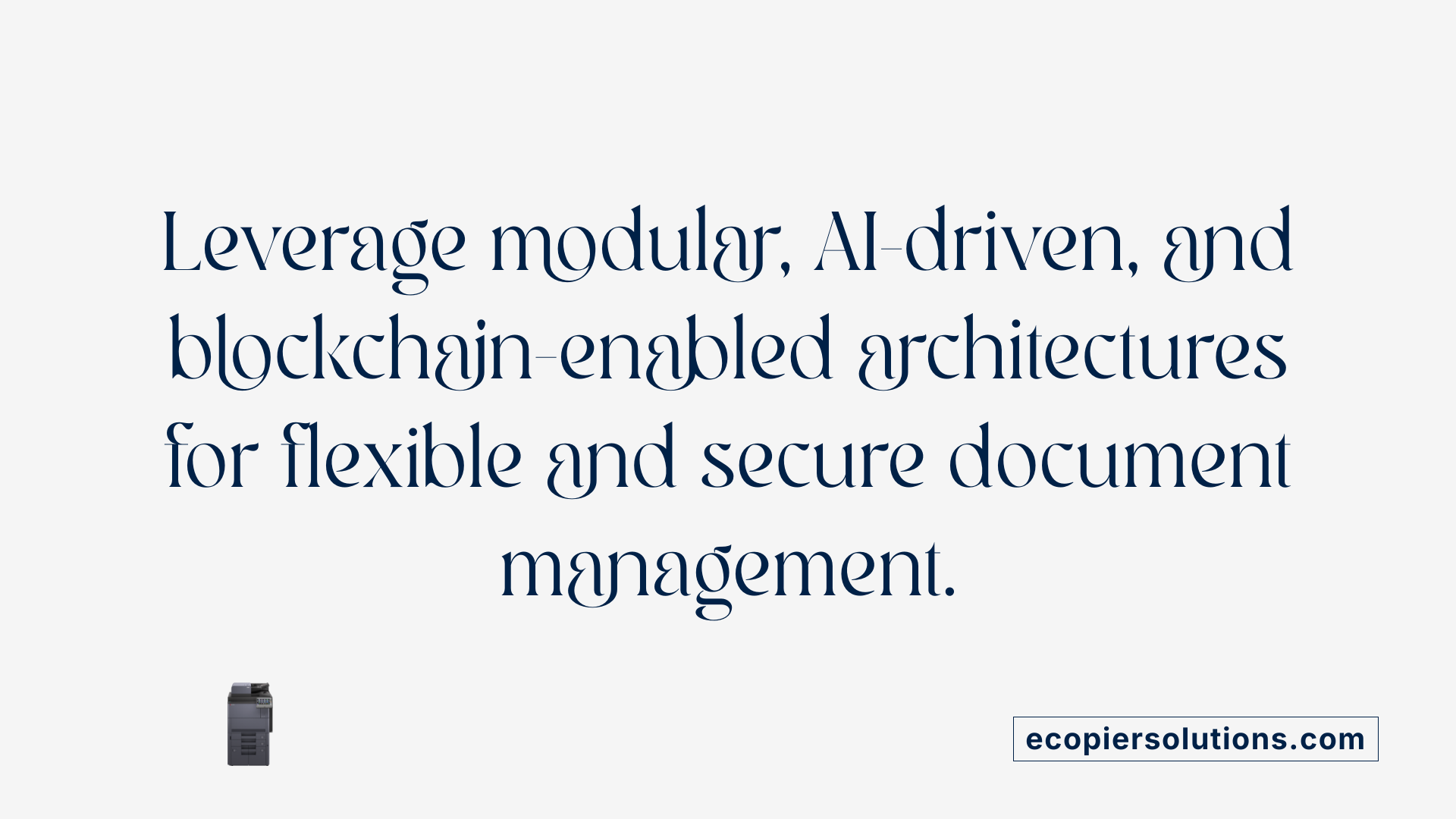
What are the upcoming technological architectures and integrations in document management, such as modular designs and human-autonomy teaming?
Emerging systems in document management are moving toward modular and headless architectures that promote flexibility and customization. These designs separate the user interface from the backend, allowing seamless integration across various digital platforms and devices.
Advances in AI are further transforming DMS by enabling predictive insights through pattern recognition and natural language processing (NLP). These intelligent features can automate routine tasks, improve search accuracy, and even anticipate user needs, significantly boosting productivity.
A notable development is Human-Autonomy Teaming (HAT), where AI systems act as collaborative partners within workflows. These systems assist with approvals, metadata tagging, and information discovery, allowing human users to focus on strategic activities.
Integration with technologies like blockchain, IoT, and zero-trust security frameworks enhances document authenticity and integrity. Blockchain provides tamper-proof audit trails and verifies document provenance, while IoT devices supply real-time data updates, supporting dynamic content management.
Furthermore, low-code development platforms and scalable APIs enable organizations to connect their document systems with other enterprise tools such as Microsoft 365, CRMs, and ERPs. This interconnected ecosystem fosters greater operational efficiency and ensures that document management adapts to evolving organizational needs.
In sum, the future of document management architecture combines flexible, modular systems with intelligent integrations that enhance security, collaboration, and user experience, driven by continuous technological innovation.
Strategic Best Practices for Future Compliance Standards
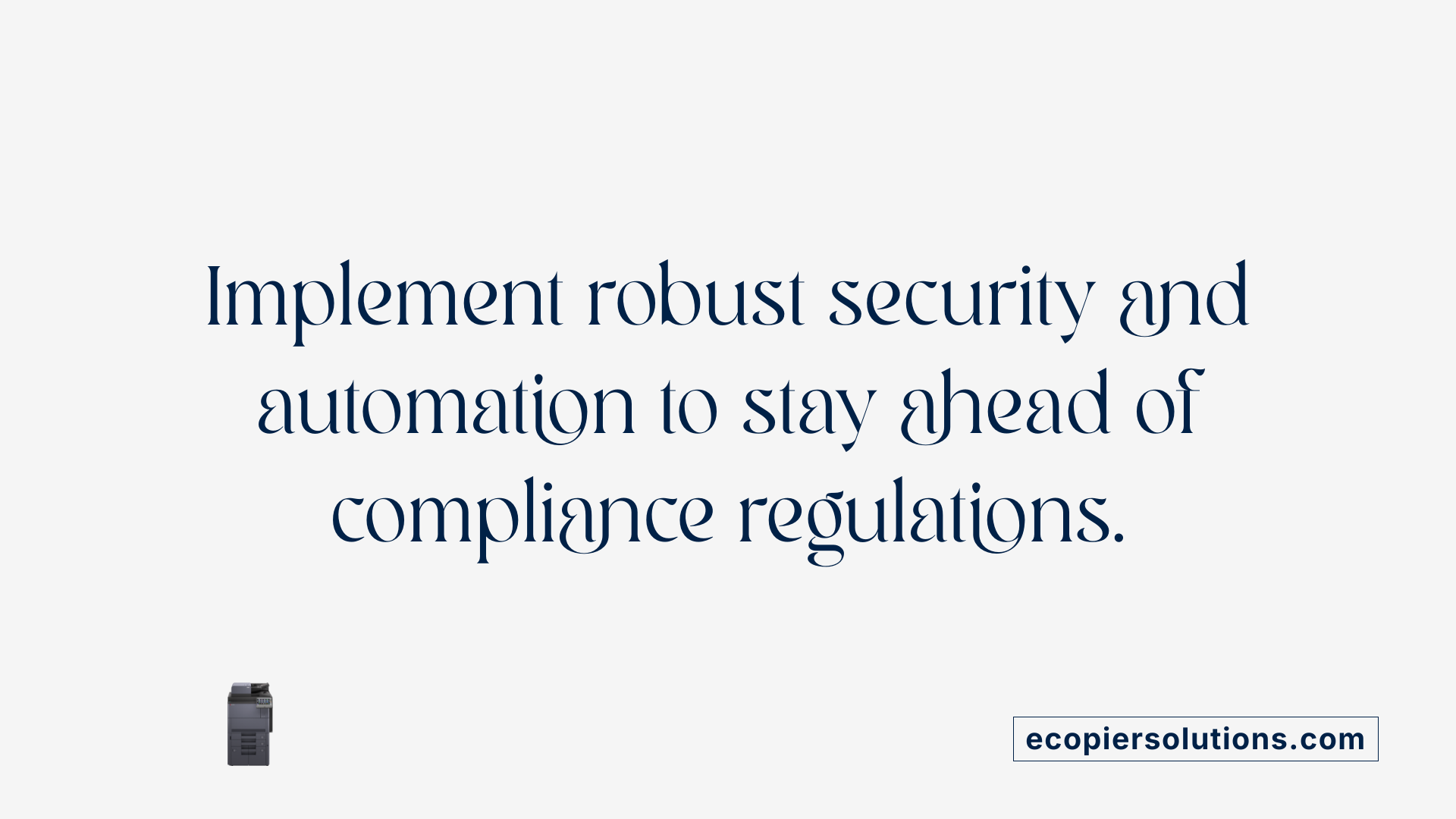
What are the best practices and strategic approaches for future compliance standards in document management?
As organizations aim to meet evolving regulatory requirements, adopting a structured approach to compliance is vital. Establishing clear KPIs and goals aligned with business objectives allows companies to measure and improve their document management processes effectively.
Standardization across document naming conventions, metadata management, and version control boosts the accuracy, consistency, and traceability of files. These practices make audits smoother and facilitate easier retrieval of information.
Security remains a cornerstone of compliance. Implementing role-based access controls, multi-factor authentication, and encryption safeguards sensitive data against breaches, while also satisfying compliance mandates such as GDPR and HIPAA.
Automation plays a pivotal role. Automating workflow processes, retention schedules, and lifecycle management reduces manual errors, speeds up compliance tasks, and ensures documents are retained or disposed of according to regulations.
Engaging stakeholders through collaboration tools, ongoing training, and regular audits helps organizations stay adaptable and resilient in the face of changing policies. Building a culture of compliance ensures that all personnel understand their roles and responsibilities.
By integrating these best practices and strategic initiatives, organizations can establish a robust framework for upcoming compliance standards, reducing risks and maintaining operational integrity.
Cybersecurity and Data Privacy in Document Management Systems
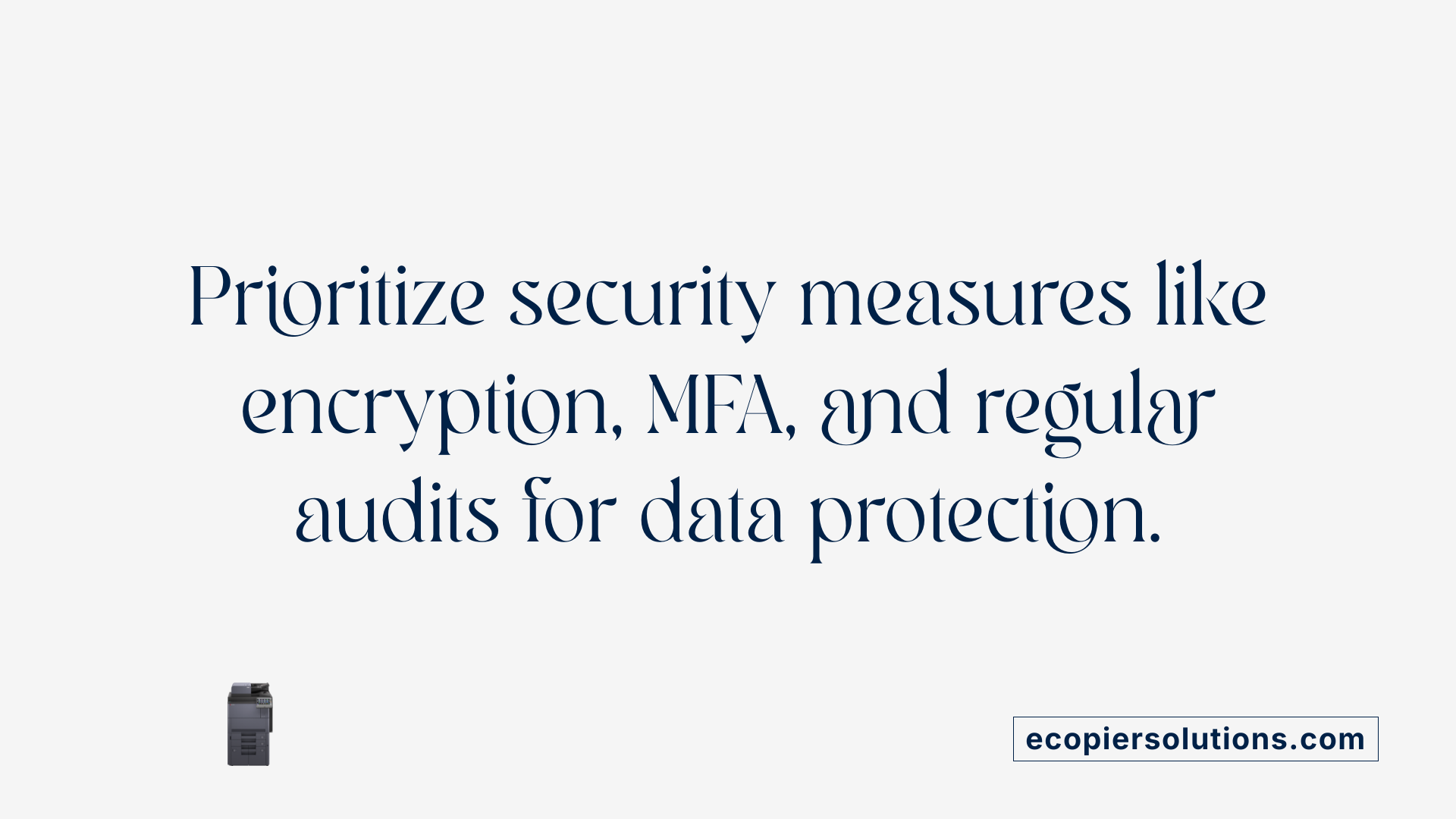
What cybersecurity considerations are important for upcoming document management systems?
As organizations increasingly adopt advanced document management systems (DMS), ensuring cybersecurity and data privacy is more critical than ever. These systems handle sensitive information across multiple channels, making them attractive targets for cyber threats.
One of the foundational measures is implementing robust encryption both at rest and during data transit. This prevents unauthorized access to data stored in the system or being transmitted across networks. Additionally, strict access controls, such as role-based permissions, ensure that only authorized personnel can view or modify specific documents.
Multi-factor authentication (MFA) and Single Sign-On (SSO) solutions provide extra layers of security by verifying user identities before granting access. Regular security audits and vulnerability assessments are vital to identify and remediate potential weaknesses before they can be exploited.
Employee training is another crucial component, preparing staff to recognize phishing attempts, handle sensitive data carefully, and follow cybersecurity best practices. Compiling incident response plans ensures swift action when security breaches occur, minimizing damage and data loss.
Secure sharing protocols and reliable backup strategies, including off-site storage following the 3-2-1 backup rule (three copies of data, two different media, one off-site), help protect against data corruption, accidental deletion, and ransomware attacks.
Features like electronic signatures, version control, and comprehensive audit trails facilitate transparency, accountability, and regulatory compliance.
In conclusion, integrating these cybersecurity practices into DMS deployment not only protects vital data but also helps organizations maintain trust with clients and stakeholders. Staying ahead of evolving cyber threats requires continuous vigilance, system updates, and an organizational culture that prioritizes data security.
For more insights, searching "Cybersecurity best practices for DMS 2024" can provide the latest guidelines and technological advancements to enhance system security.
Future Industry Directions and Regulatory Impacts

What are current predictions and insights for government and enterprise document management systems?
Looking ahead to 2024 and beyond, the landscape of document management is set for substantial evolution. Experts forecast that the market for government and enterprise DMS will grow significantly, driven primarily by the widespread adoption of advanced technologies such as AI, blockchain, and cloud solutions. By 2037, the market value could exceed USD 55.61 billion, reflecting the critical role these systems will play in organizational efficiency.
AI is expected to become even more integral, automating routine tasks like data extraction, classification, and indexing. This will free up human resources for more strategic activities and improve decision-making accuracy. Furthermore, AI-driven predictive analytics will enable organizations to proactively manage risk, comply with regulations, and anticipate future needs. Gartner predicts that by 2028, at least 15% of work decisions will be made autonomously through AI, highlighting its growing importance.
Cloud technology continues to be a dominant trend, prized for its scalability, cost-effectiveness, and remote access capabilities. Hybrid cloud models are particularly appealing, as they balance flexibility with security and regulatory compliance. Real-time collaboration tools, mobile access, and enhanced security measures are now essential features, enabling seamless remote work environments and ensuring data protection.
Government and enterprise sectors will increasingly integrate DMS with existing systems such as ERP, CRM, and HRM platforms. This interconnectedness facilitates smoother workflows, better data governance, and improved operational efficiency.
Regulatory compliance remains a top priority, especially with evolving laws around data privacy and security, including GDPR and various national standards. Advanced security features like encryption, role-based access controls, and audit trails will be standard, helping organizations mitigate risks associated with cyber threats and data breaches.
In summary, the future of document management systems centers on smarter, more secure, and fully integrated solutions. These will leverage emerging technologies to boost productivity, enhance compliance, and promote sustainability through digital, paperless workflows.
Regulatory Updates and Their Influence on DMS
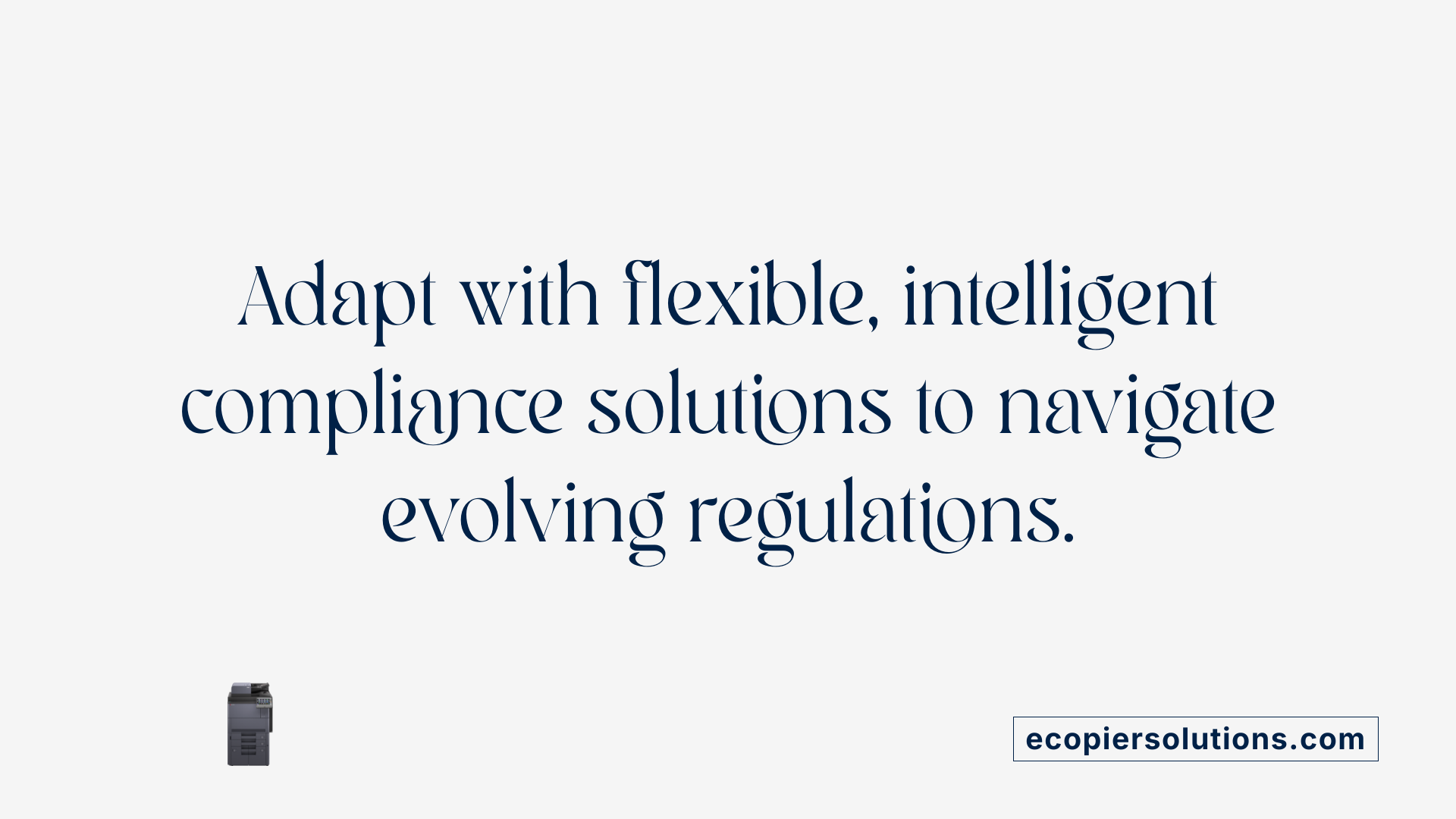
How are regulatory updates and evolving compliance requirements shaping document management in the near future?
In 2024, regulatory changes are significantly influencing how organizations manage documents. As compliance standards like GDPR, HIPAA, and others evolve, companies are adopting smarter and faster solutions to meet these demands.
One major trend is the use of advanced technologies such as AI, automation, and data analytics. These tools enable real-time monitoring of compliance status, helping organizations identify potential risks early and respond proactively. Automated workflows facilitate quick updates to documents, ensuring they meet the latest standards without manual intervention.
Regulatory environments are becoming more complex and global. To navigate this complexity, organizations deploy flexible, scalable systems that can adapt swiftly to new standards, including environmental, social, and governance (ESG) regulations. Tools like intelligent data linking and compliance management software improve accuracy and transparency, making it easier to produce auditable, compliant documentation.
Furthermore, automation simplifies regulatory reporting and ensures consistency across departments and regions. With AI-driven insights, organizations can streamline tasks like compliance checks, documentation updates, and risk assessments, reducing errors and improving efficiency.
To stay ahead, organizations must continuously invest in new technology, provide ongoing staff training, and foster collaborative strategies. Building resilient, agile document management frameworks is essential to adapt to rapidly changing regulatory landscapes, supporting compliance across multiple jurisdictions.
Overall, the integration of innovative compliance tools is transforming document management, making it more dynamic, transparent, and responsive to evolving legal standards.
Shaping the Future of Compliance in a Digital World
As organizations navigate the complexities of 2024’s regulatory landscape, technological innovation emerges as a crucial enabler of compliance excellence. The integration of modular architectures, AI-driven automation, blockchain, and cloud solutions enables smarter, more secure, and adaptable document management systems. Strategic planning rooted in clear KPIs, security, and stakeholder collaboration is essential to meet future standards and mitigate risks. With ongoing regulatory evolutions, embracing emerging technologies and best practices will be fundamental for organizations striving for compliance resilience, operational efficiency, and a competitive edge in the digital era.
References
- 5 Emerging Trends in Document Management | Accruent
- The Future of Document Management: Trends to Watch in 2024
- 10 Trends Shaping Document Management in 2025 - Invensis
- The Top 9 Trends in Record Management for 2024 - Restore
- Best Document Management Practices 2024 - Folderit
- The Future of Document Management: Emerging Trends for 2024
- Top Three Records and Information Management Industry Trends in ...




.png)
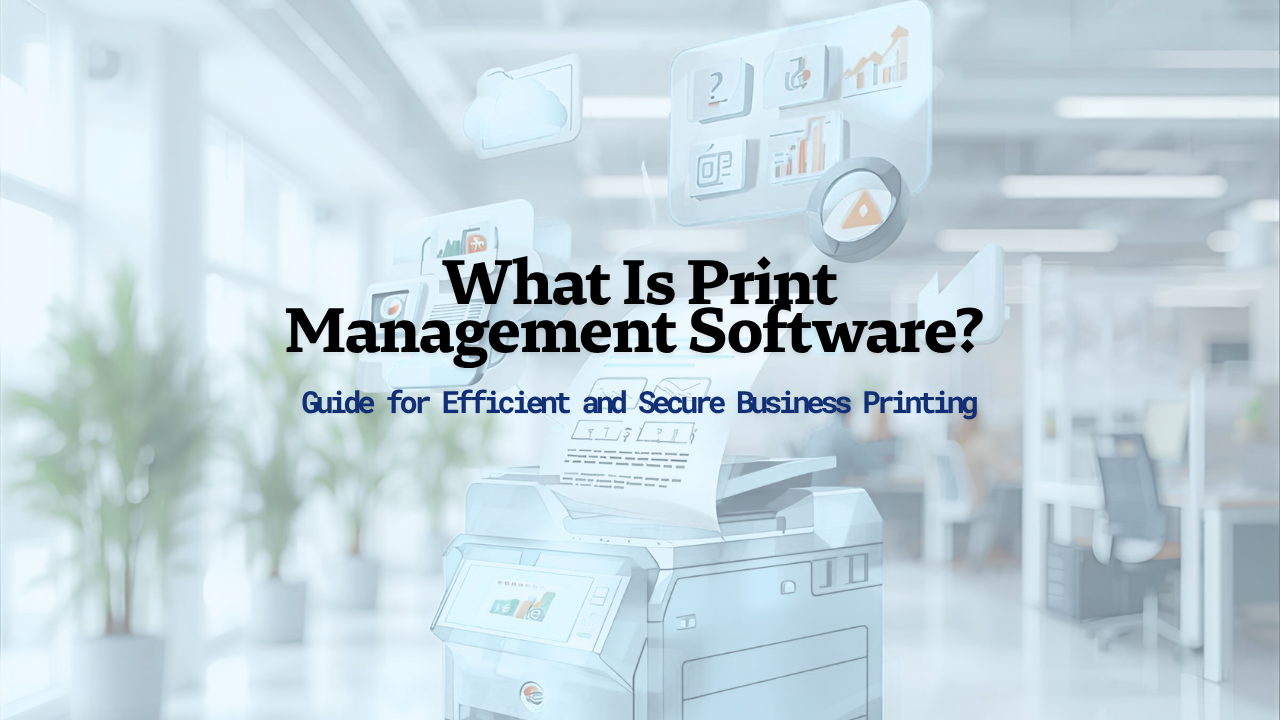
.png)
























